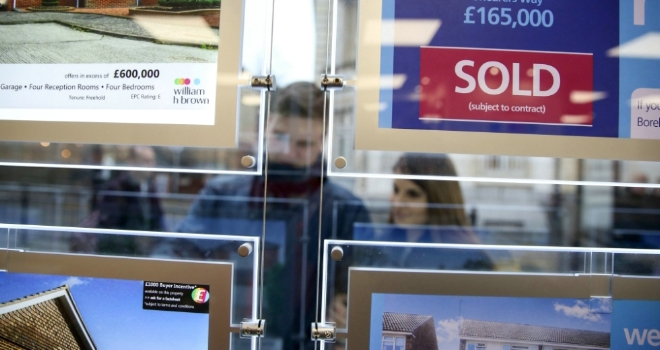Falling house prices 'not an inevitable conclusion' as monthly growth continues: e.surv
The Midlands take the top two places in regional growth, both above 10%.

"Our data this month shows a slowing rate of growth, which will surprise no-one but nevertheless there is still modest growth, which is positive."
Annual house price growth across England and Wales was 6.0% in January, rising to 7.9% excluding London and the South East, according to the latest e.surv house price index.
Annual growth is 1.1% lower than the 7.1% seen in December, and represents the fifth month in succession in which the annual rate of growth has slowed. However, prices are still increasing, and the current average price of £378,277 sets a new record level for England and Wales as a whole.
On a monthly basis, prices in January increased by £270, or 0.1%. e.surv says this suggests that "falling prices are not an inevitable conclusion, as has been argued by some housing commentators". The latest Rightmove index shows that new seller asking prices have risen by 0.9% (+£3,300) this month - this is the biggest increase at this time of year since 2020, as New Year sellers test the market.
The changes in average house prices over the last twelve months in all ten GOR areas remain positive, although only just so in the case of Greater London, indicating that all countries and regions in England and Wales start with higher prices in 2023, compared with twelve months earlier.
However, since last month, the rate of change in the growth of house prices has diminished across all areas. The largest fall in the rate of price growth was in the North East, down 3.8% from 12.1% to 8.3%, followed by the North West, down 3.6% from 12.8% to 9.2%.
The East and West Midlands remain the top two regions in terms of having the highest annual rates of price growth, at 11.0% and 10.3% respectively. In the East Midlands, six of its ten constituent unitary authority areas have price growth in excess of 10.0%, with the City of Nottingham setting the highest rate of annual growth in England at 23.7%.
The West Midlands region is in second place, a position it has held for the last six months, with the West Midlands unitary authority (which includes Birmingham) being its prime performer, having annual price growth at 13.8%.
By contrast, Greater London has the lowest annual growth rate of just 0.6%, although 19 of the 33 London boroughs saw prices rise on an annual basis (two less than last month).
Wales has risen back up to third place, having held first position for eleven months from July 2021 to May 2022 before falling down the rankings. 21 of the 22 local authority areas in Wales are currently experiencing an increase in prices over the last twelve months, with only Pembrokeshire having a fall. Similarly, 10 of these 22 are currently at record price levels.
Richard Sexton, director at e.surv, commented: “Our data this month shows a slowing rate of growth, which will surprise no-one but nevertheless there is still modest growth, which is positive.
“It’s our view that while other commentators are comparatively downbeat about the future of the housing market, they are focused on specific elements. Mortgage borrowers, for example, are enduring significant increases in the cost of borrowing and this is curtailing their activity but since our index covers cash and mortgage transactions it does give a slightly different picture of what has been going on. Cash is a significant factor in some key housing markets.
“As a result of looking at whole of market activity rather than mortgaged transactions we can see that prices in January increased by £270, or 0.1%, which although very small is still positive. Indeed, we know that other sources too are suggesting things are slightly better than might otherwise be thought from the slew of negative headlines that have accompanied recent announcements. There is a wild variety of predictions with regard to property prices at the moment, but we err on the side of caution for now as the data suggests markets may be more robust than many suspect.
“What the data does tell us is that as an investment class of its own, property continues to perform well. Since the start of the pandemic in March 2020, prices to December 2022 have risen by some £65,500, or 21.0%, which contrasts with the increase in consumer price inflation (including housing - CPIH) of 15.4% over the same period.”

